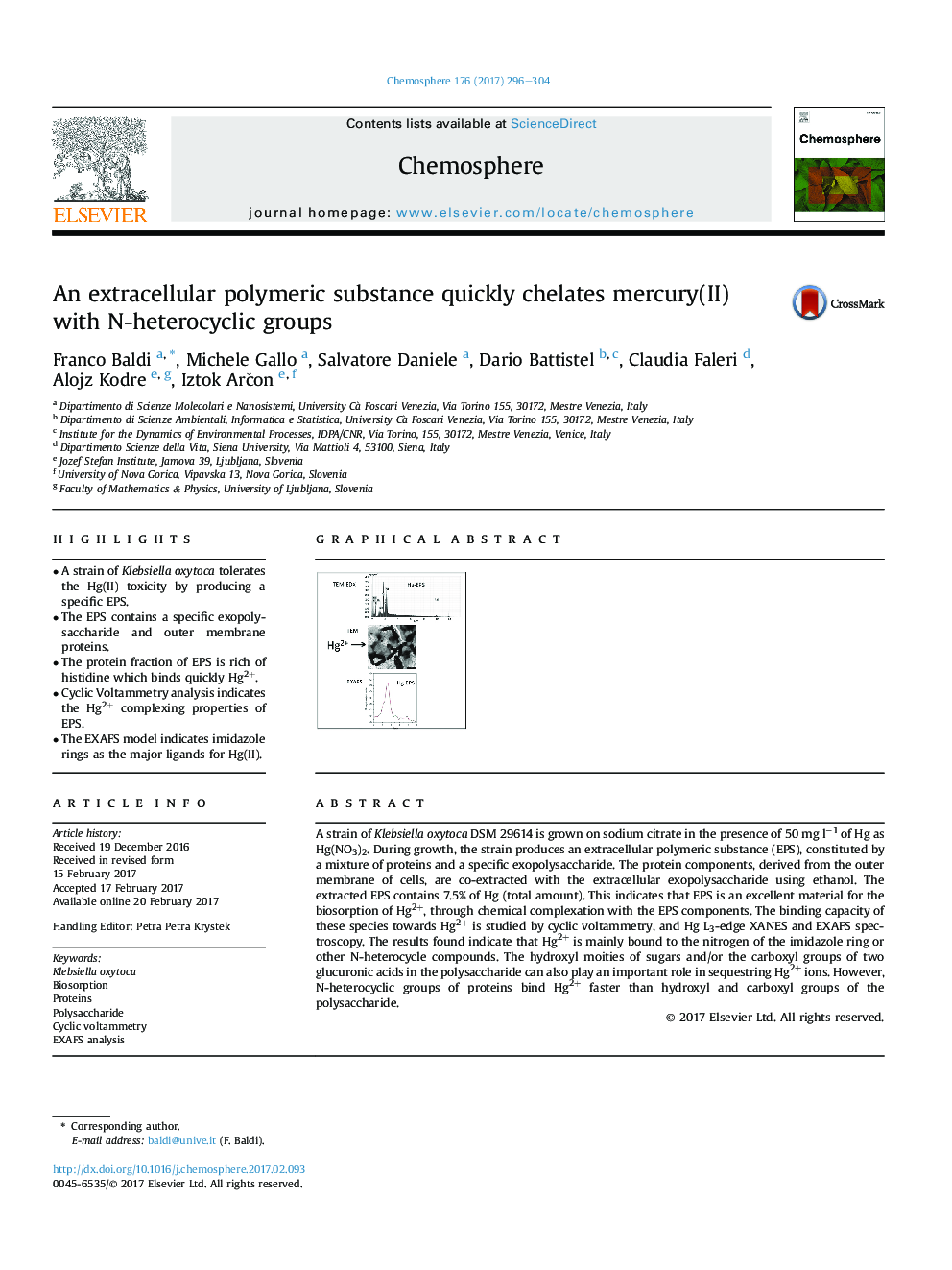| Article ID | Journal | Published Year | Pages | File Type |
|---|---|---|---|---|
| 5746840 | Chemosphere | 2017 | 9 Pages |
â¢A strain of Klebsiella oxytoca tolerates the Hg(II) toxicity by producing a specific EPS.â¢The EPS contains a specific exopolysaccharide and outer membrane proteins.â¢The protein fraction of EPS is rich of histidine which binds quickly Hg2+.â¢Cyclic Voltammetry analysis indicates the Hg2+ complexing properties of EPS.â¢The EXAFS model indicates imidazole rings as the major ligands for Hg(II).
A strain of Klebsiella oxytoca DSM 29614 is grown on sodium citrate in the presence of 50 mg lâ1 of Hg as Hg(NO3)2. During growth, the strain produces an extracellular polymeric substance (EPS), constituted by a mixture of proteins and a specific exopolysaccharide. The protein components, derived from the outer membrane of cells, are co-extracted with the extracellular exopolysaccharide using ethanol. The extracted EPS contains 7.5% of Hg (total amount). This indicates that EPS is an excellent material for the biosorption of Hg2+, through chemical complexation with the EPS components. The binding capacity of these species towards Hg2+ is studied by cyclic voltammetry, and Hg L3-edge XANES and EXAFS spectroscopy. The results found indicate that Hg2+ is mainly bound to the nitrogen of the imidazole ring or other N-heterocycle compounds. The hydroxyl moities of sugars and/or the carboxyl groups of two glucuronic acids in the polysaccharide can also play an important role in sequestring Hg2+ ions. However, N-heterocyclic groups of proteins bind Hg2+ faster than hydroxyl and carboxyl groups of the polysaccharide.
Graphical abstractDownload high-res image (140KB)Download full-size image
